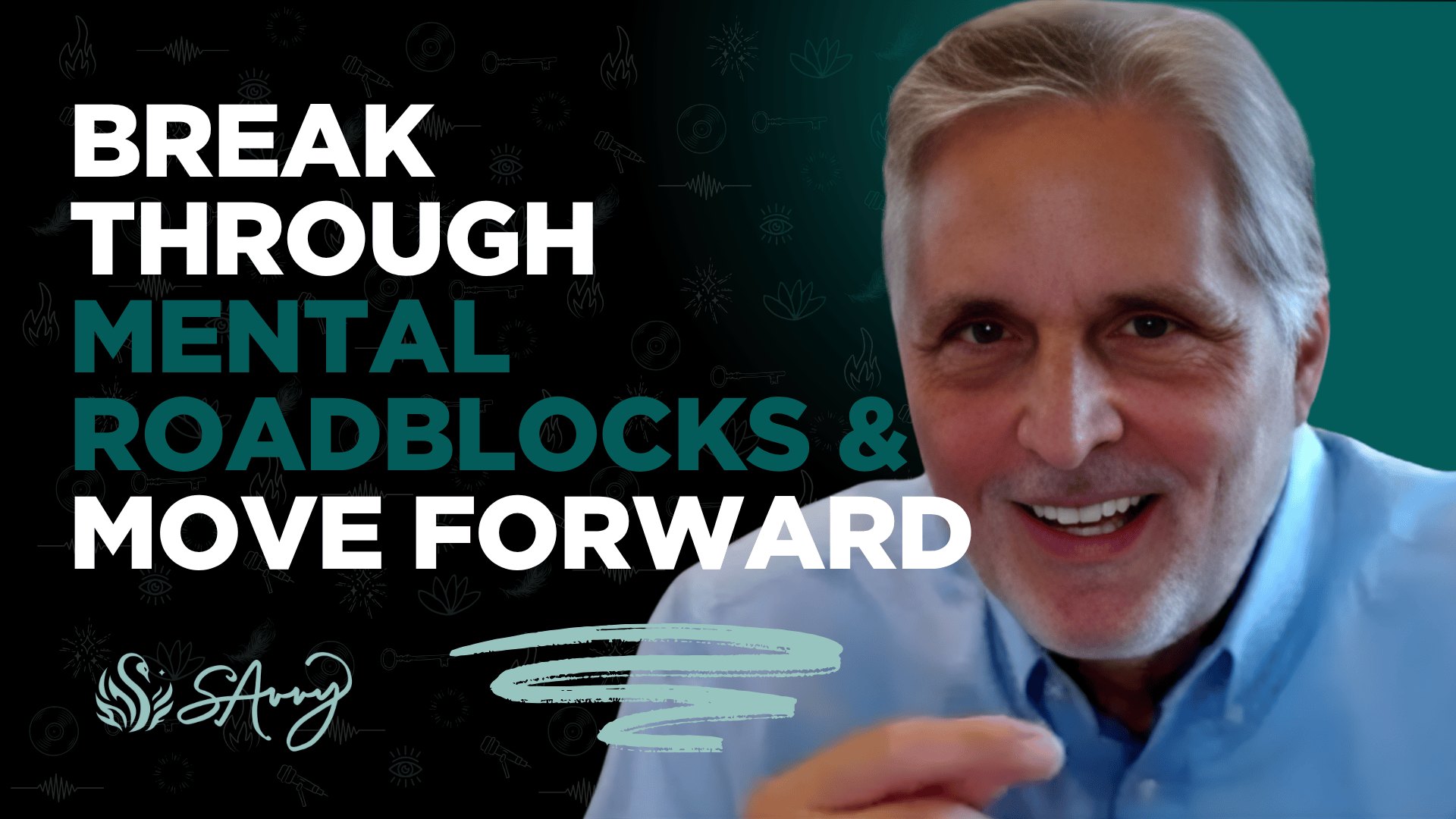Something strange happens when you try to step up in your career or lead a team through change. You plan, prep, rehearse, read the books, make the lists. But the second pressure hits, you default to old habits, retreat into comfort zones, or get caught in overthinking. You’re not lazy or broken. Your brain’s just doing what it was built to do. And that’s exactly where rewiring your brain for success becomes not just useful but necessary.
The trouble is, most folks try to bulldoze their way through these patterns by forcing confidence or pretending fear doesn’t exist. That works about as well as yelling at your phone when the signal drops. What you really need is to understand how those mental loops were built in the first place, and how to quietly, patiently interrupt them without freaking out your nervous system. This episode with Tom Scott gives you that map, without fluff or finger-wagging.
Tom’s not just tossing theory at you. He’s spent decades leading at the highest levels, from Nordstrom to the C-suite, while also partnering with a chemical engineer to decode how brain patterns show up in everyday work stress, leadership, and decision-making. You’ll hear stories from real teams, messy meetings, and pivotal coaching moments that will probably sound uncomfortably familiar in the best way.
Quick Brain Boost: TL;DR on What This Covers
- Most people operate on autopilot built from old memory patterns
- These brain shortcuts were built for survival, not success
- You’re not self-sabotaging on purpose, but the effect is real
- Trying to change behavior without shifting internal dialogue won’t stick
- You can learn to interrupt patterns, build new ones, and lead with clarity
- Old beliefs about ego, confidence, and “strong leadership” keep folks stuck
- You don’t have to fake it. You do have to pay attention
- Meetings can either activate fear or create alignment, depending on language
- Leading is less about having answers and more about managing dynamics
- Curiosity beats correction when it comes to growth
Stop Blaming Motivation. It’s Not That You Don’t Want It
Most people think they need more motivation to finally go for that promotion, speak up in a meeting, or shift into that bold new career. But the truth is, motivation isn’t the problem. What’s really happening is your brain is reacting to a threat, not laziness. That threat might just be change itself.
Tom explains how we’ve built “memory frames” that act like invisible railroad tracks in your brain. These frames were carved out by repetition and emotion, and they quietly steer your decisions. The scary part? They don’t care if the tracks are taking you somewhere you want to go. They just want you safe. So when a new opportunity shows up, your brain often tries to avoid it even if you know, logically, it’s what you want.
Trying to force change without addressing these patterns is like trying to install new software on a computer running ancient code. The result? Self-doubt, procrastination, or blanking out right when it matters most. Tom’s work with the Human Operating System shows how to gently interrupt these loops and build new ones based on curiosity and awareness.
Picture This: A Leader Who Looks Just Like You
You’re in a high-stakes meeting. Someone throws out an idea that bumps against yours. You know the right move is to stay open, ask questions, maybe explore the tension. But your chest tightens. You feel heat rising in your face. Before you can think, you’re defending your stance or pulling back completely. Later, you replay it on loop, wondering why you couldn’t just handle it better.
Tom’s coached thousands through this exact moment. It’s not about being weak or reactive. It’s about your survival brain doing its job. Your nervous system read that disagreement as a threat. So your ego stepped in, fast and uninvited. The cool part? You can train your brain to pause, notice the impulse, and make a new choice. That’s the rewiring. And it starts with naming what’s happening without judgment.
People assume leadership is about always knowing what to do. But it’s really about staying present in discomfort, noticing the pattern trying to run the show, and choosing something else. That’s not soft. That’s skill.
There’s a Way Out. It Starts With Better Internal Dialogue
You don’t have to believe every thought you think. That single idea is one of the most powerful takeaways from Tom’s work. If your brain’s default setting is to avoid risk, it’ll often feed you subtle, sneaky narratives like “You’re not ready” or “They’ll think you’re wrong.” Those thoughts feel real, but they’re just familiar.
Rewiring starts by creating a different internal conversation. That might sound simple, but it takes practice. Tom walks through how to build that new inner voice with real intention, not fake affirmations. You’re not trying to “trick” yourself into confidence. You’re training your brain to respond to reality, not old fear.
Here’s where that matters most:
- Speaking up in rooms where you usually stay quiet
- Making clear asks instead of hinting or hoping
- Pausing in conflict instead of reacting on autopilot
- Staying curious when someone challenges your view
- Letting go of the need to always be “the expert”
What’s wild is how fast this shift compounds. One new response leads to another. The rewiring becomes real.
Neuroscience Isn’t Just Theory. Here’s What It Looks Like at Work
It’s easy to nod along with neuroscience in a podcast, but what happens when the stakes are real? Tom brings examples from boardrooms and coaching sessions to show exactly how rewiring works in the moment. You’ll hear how shifting a single question in a tense meeting stopped an argument in its tracks. How changing one sentence helped a team get unstuck after weeks of conflict.
Think of your brain like a well-worn hiking trail. You walk the same path over and over, even when you don’t like where it leads, because it’s familiar. To make a new trail, you have to notice the old one, pause, and choose a different step. Eventually, the new trail gets easier. You stop tripping over the same logs.
| Old Pattern | New Pattern Built Through Awareness |
| Defend your idea | Ask a clarifying question |
| Avoid giving feedback | State your observation with curiosity |
| Wait for permission | Take small action and name your intent |
| Feel self-doubt | Name the fear and choose to proceed |
| Overprepare to feel ready | Take one step, then adjust |
The Human Operating System gives you tools to do this on purpose, not just when you happen to be in a good mood or fully rested.
This Might Be The Sign You’ve Been Waiting For
If you’ve been circling the same personal roadblock, having the same unproductive meeting, or replaying the same stuck conversation, it’s probably not a strategy problem. It’s likely a wiring problem. And wiring can be changed.
Tom Scott’s framework doesn’t require a personality transplant or a twenty-step plan. It asks for one thing: a shift in awareness. Start by catching the moment your brain tries to shrink the goal. Then choose not to play along. You’re not “reprogramming” yourself into a robot. You’re updating your internal system to match what you actually want instead of what you fear.
To explore this approach more deeply or bring it into your team’s work, check out Tom’s book Going Beyond Business as Usual or contact us if you want help applying these tools in your world.
Break the Loop: What Actually Matters Most from This Chat
- Your brain is wired for safety, not success
- Old mental patterns shape your reactions without you realizing
- Change starts by noticing, not forcing
- Language in meetings can shift entire dynamics
- Ego gets triggered by fear, not facts
- You can create new internal scripts that drive better actions
- Curiosity helps you interrupt defensive habits
- Leadership is more about managing energy than having answers
- You’re not alone in feeling stuck sometimes
- The loop can be broken. And you can be the one to do it
No one teaches this stuff in school. And yet, it shows up in every performance review, every tough conversation, every time you sit on a big idea instead of saying it out loud. What Tom shows is that it’s never too late to change the way your mind talks to itself. And when that changes, everything else does too.





